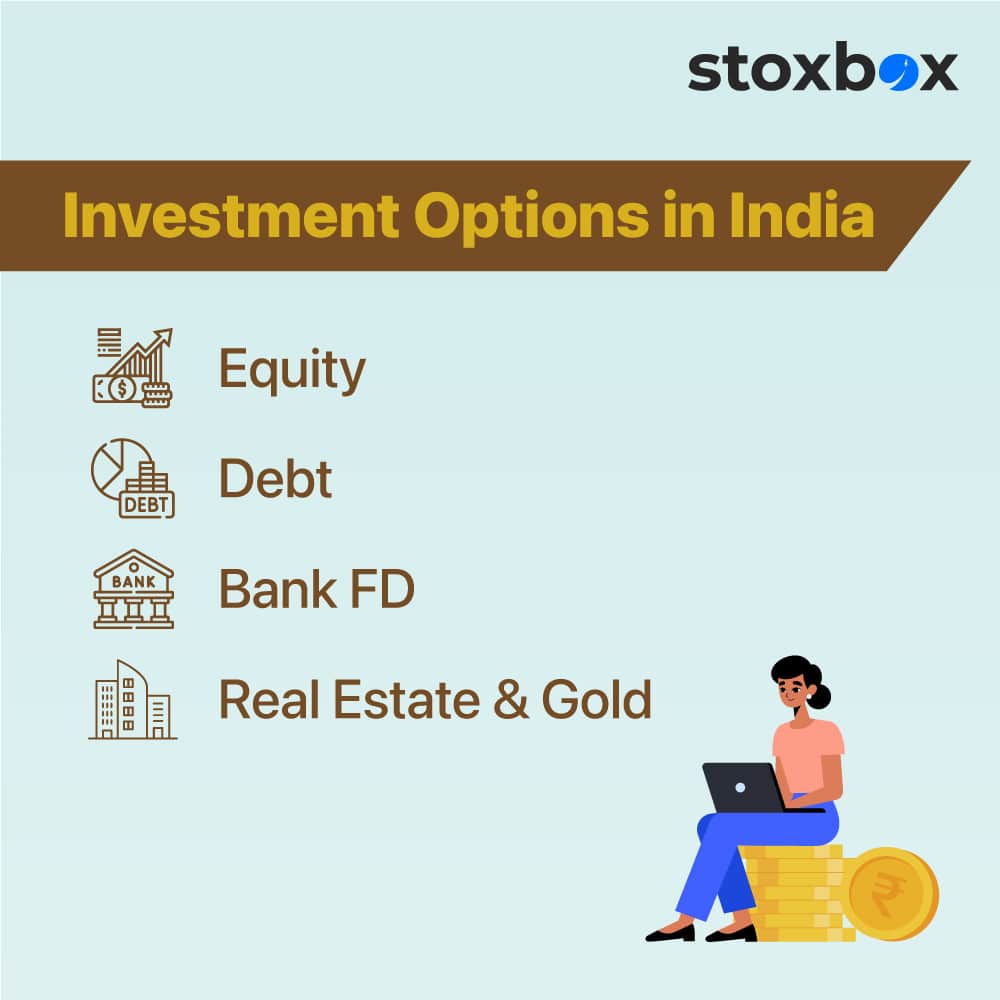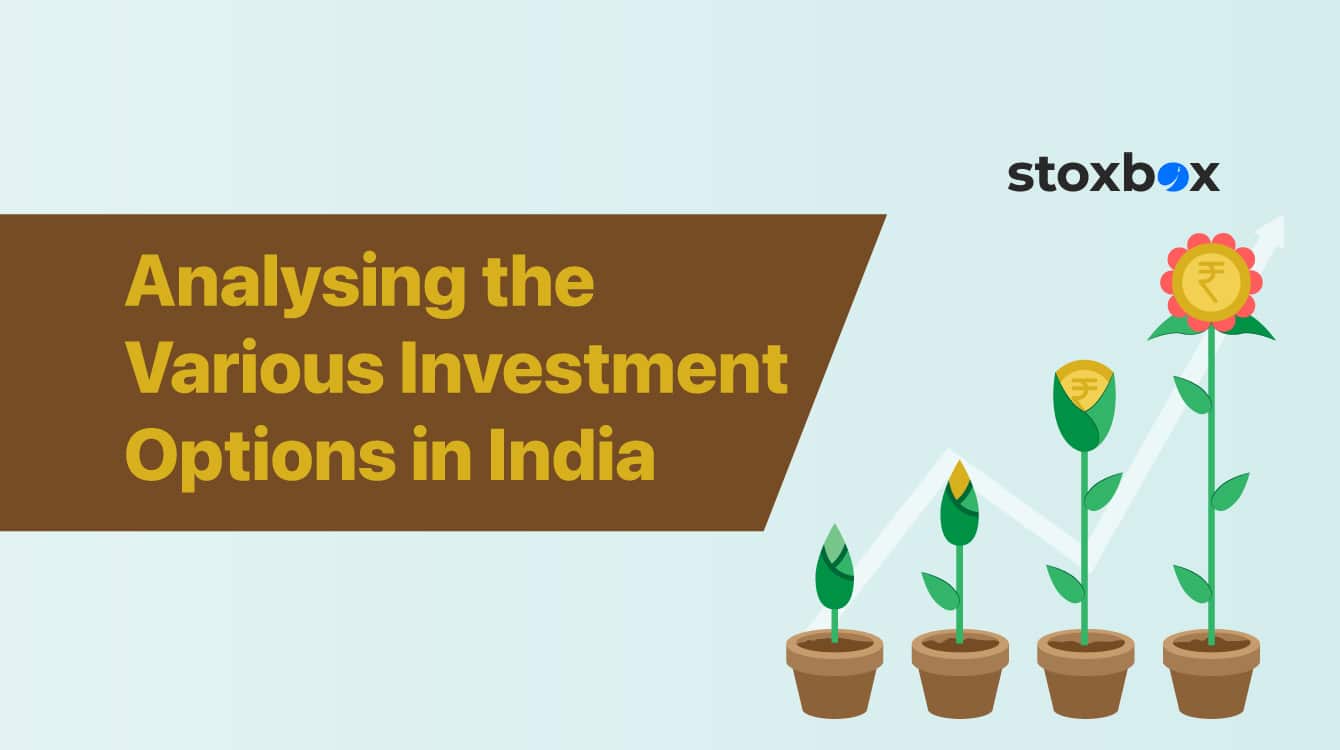Confused where to invest see various investment option and analyse them
Table of Contents
When Mohan joined a major real estate company in Pune, after completing his MBA in Logistics and Supply Chain Management, he had just crossed his 26th birthday. Realistically speaking, he knew he would work for the next 15 odd years and then, probably, start a company of his own. For this dream to materialise, and to also secure his future in a corporate world, Mohan would need savings. Considering the high rate of inflation, he knew that sticking to the age old saving mechanisms of bank FDs and RDs would not really work in his favour. He would need to be more savvy and focused when it came to saving his hard-earned money in a sustainable manner. Also, he did not want to merely save his money. He was also focused on earning strong returns and accumulating wealth over the long term. Now, this caused him to look towards the various investment options in India. What investment options in India should he leverage to meet his goal? How much should he allocate to each investment option to reach his goal in a fool-proof manner? To gain a better understanding of the fast evolving landscape, Mohan first took a look at the past.
Indian Investment Landscape Over the Years
Over the past decades, most Indians possessed a cautious outlook when it came to investment. People who had worked hard to overcome their difficult economic scenarios did not find it easy to park funds in risky assets like stock markets. Further, with low regulatory measures, the markets were more volatile. People who knew how to time the market ended up making unprecedented profits but, at the same time, many of the newcomers ended up losing huge amounts of money and, along with it, their confidence. Therefore, much of the investment was focused on bank FDs and RDs, with a few brave people trying out the debt market. However, the rising millennial class in India has changed the investment landscape immeasurably. Gone are the days when people thought for years, and saved up all their money, before making their way to a broker. Today, people can act upon a number of investment principles, and complete their investments in a matter of minutes.
According to a Barclays article[1], there are strong prospects for the economy, corporate earnings and financial markets. Astute investment through optimal diversification can help investors like Mohan manage volatility seamlessly and mitigate risk to a significant degree, making investment options in India a particularly attractive space. Further, with the millennial population now boasting both expendable income and a focus on the future, there is no stopping the barrage of investment decisions taking place on a regular basis.
Investment Options in India

Given his long-term goal, and focus on diversification, Mohan decided to park his funds across the various investment options in India. This included the following asset classes –
Equity: This would act as the focal point of his investment as equities offered huge potential for returns, especially over the longer term. To avoid the risk of losses, Mohan focused on companies which had strong fundamentals and good management structures. This would help him gain solid returns without facing unnecessary risk. He decided to invest in equities through both the direct route and mutual fund SIPs. In this way, he could enjoy the benefits of dividend income and capital appreciation through direct equities, and rupee cost averaging and compounding through the SIP route.
Debt: Understanding the importance of diversification and risk mitigation, Mohan also allocated a part of his funds to debt securities like AAA rated corporate bonds and government securities. While this investment option in India would not give him returns at par with the equity market, it would ensure stability and a hedge against the risk impacting the overall portfolio. He could also earn regular interest payments from the bonds he invested in.
Bank FD: To appease his parents, and to keep a portion of his income safe with a bank, Mohan also decided to open an FD when he received his annual bonus. The amount would be easily accessible, if he ever needed it, and he would end up earning an interest on it, without taking on any risk. Through the FD, Mohan also invested in a traditional investment option in India.
Real estate and gold: Considered a part of the alternate investment options in India, Mohan thought of allocating a part of his money to real estate and gold assets. Since he did not wish to actually buy property or the precious metal, he chose to invest in Real Estate Investment Trusts and Gold ETFs. This would ensure that he earned returns when these assets appreciated, without being stuck with highly illiquid securities.
Therefore, through optimal asset allocation in the various investment options in India, Mohan managed to create a portfolio poised for strong returns. Now that you know the different investment options in India, you can also go ahead and take the next step towards creating your portfolio.
You might also Like.
No posts found!

